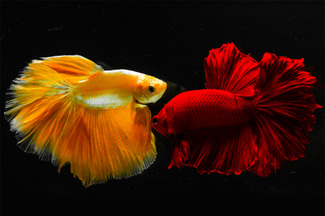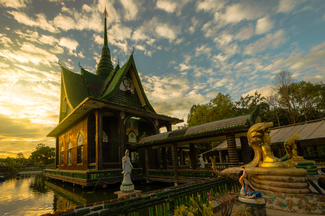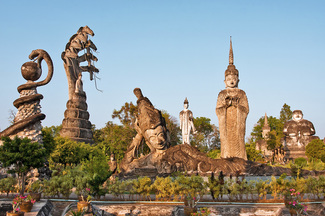CAVING IN KRABI
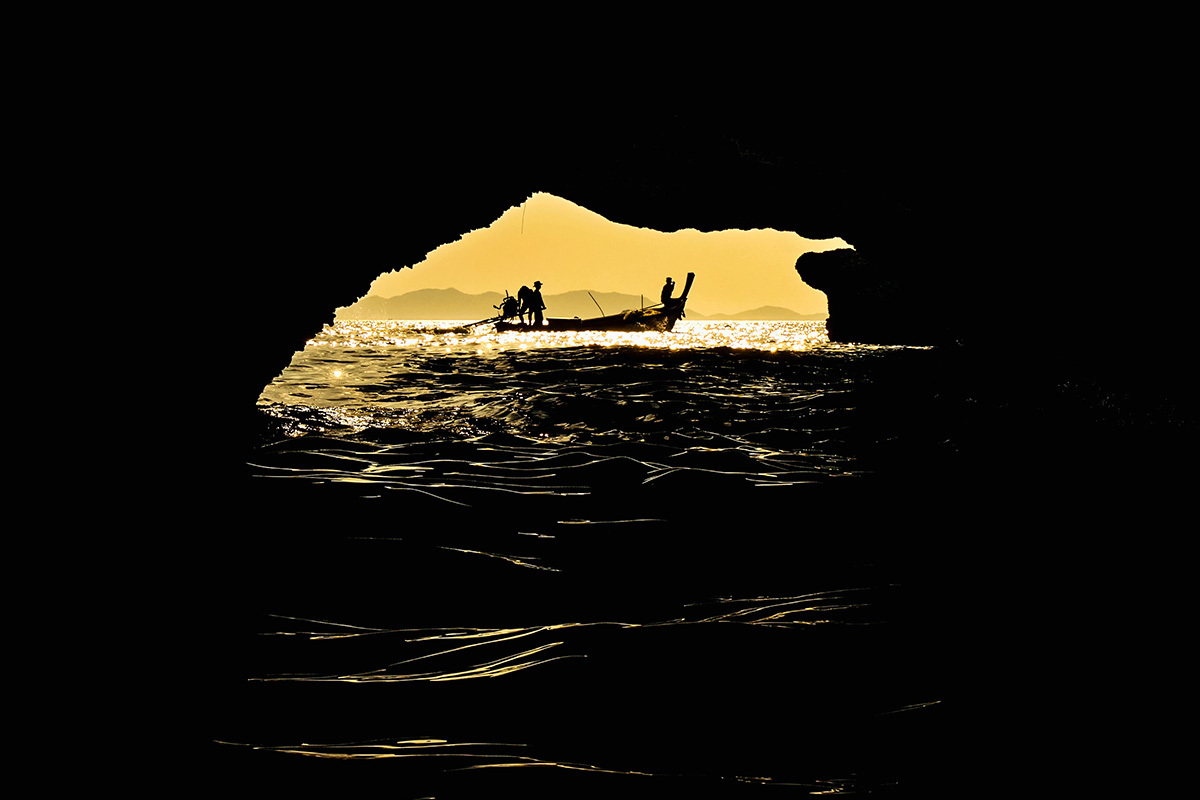
Krabi, a tropical wonderland
There is something about caves that brings to mind lost worlds, hidden mysteries, legends and folklore and their lure is irresistible. In Krabi the setting is magnificent and every bit the tropical island paradise with gorgeous beaches, aquamarine and turquoise seas, emerald-green mountains, cascading waterfalls, limestones karsts, an abundance of marine and wildlife and some of the most spectacular caves that you’re ever likely to see.
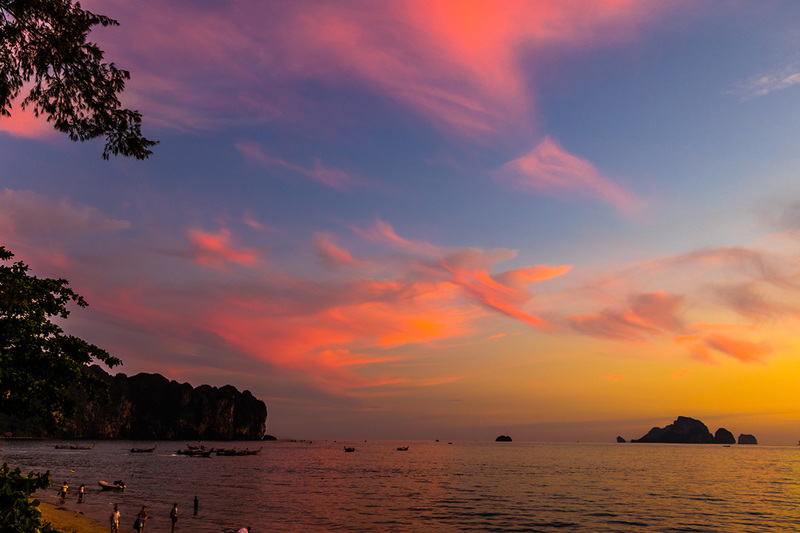

A glorious sunset over Krabi
Krabi Town
Krabi Town is likely to be your starting point, a bustling market town and thriving fishing port, from which you can arrange trips to caves on the mainland and the outlying islands to explore the network of cave systems that abound in this region, some of which hold tantalising clues to their long history of human occupation as places that hold a special significance in the spiritual realm.
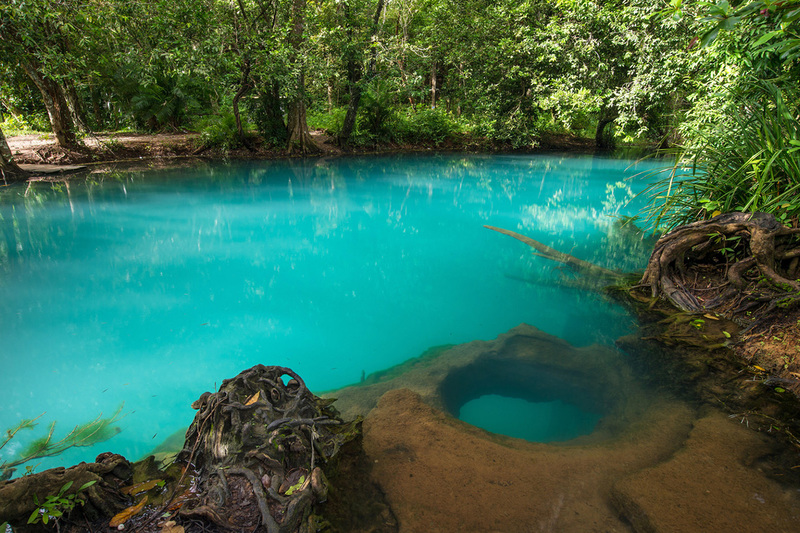
The unusual blue water of Sra Kaew
Sra Kaew, Southeast Asia’s deepest cave
One of the most intriguing underwater caves, located between Krabi and Phang Nga, is Sra Kaew Cave, which is the deepest in Southeast Asia, at some 200 metres in depth. Although swimming in the surface pool is safe, the dive itself is best left to very experienced divers who take a very professional approach and come equipped with back-up safety teams in place to ensure there are no mishaps. The surrounding area is a nature-lover’s paradise with excellent walks and trekking opportunities in the limestone hills.
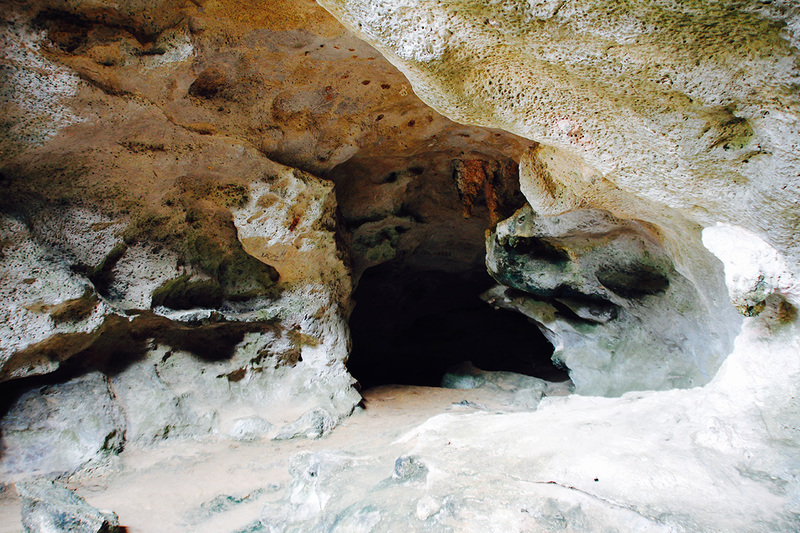
Entrance to Ban Bor Thor
Ban Bor Thor
Ban Bor Thor, about 50 kilometres from Krabi Town, has dense mangrove forests, an extensive system of lagoons and caves well worth exploring. It is also one of the earliest sites of human occupation in Thailand. Inside the caves are a number of prehistoric paintings believed to have been made some three thousand years ago by ancient seafarers seeking refuge form inclement weather. There are almost 100 paintings on the walls and ceiling of the cave, depicting people and animals and a huge number of shell fragments on the cave floor left by prehistoric cave dwellers. Many of the caves are only accessible by kayak and the trip is ideal for those new to cave exploring.
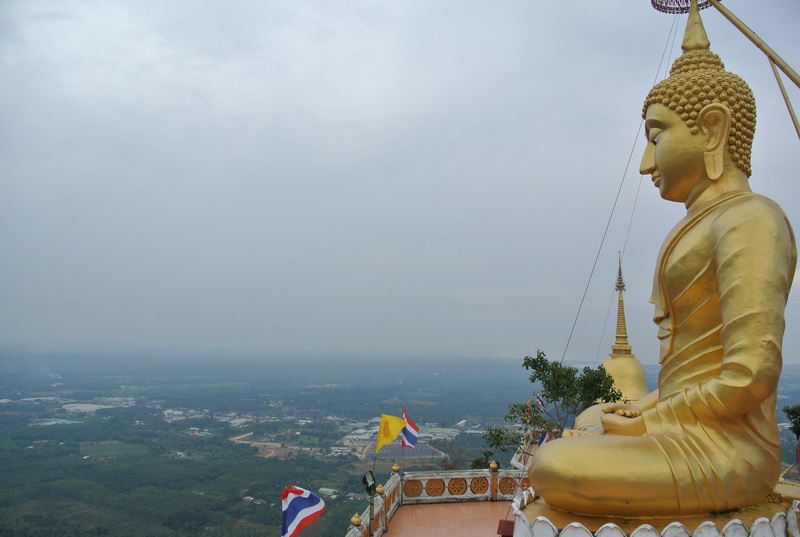
The stunning reward for climbing 1,237 steps
Krabi Tiger Cave, Wat Tham Sua
Close to Krabi town, Wat Tham Sua is a temple in a labyrinth of caves in a stunning natural setting. Here you can explore the warren of limestone caves at the base of a very impressive cliff face. After exploring the lower levels, where you can still see tiger footprints, the inspiration for the temple’s name – Tiger Temple Cave, you make the ascent to the temple by scaling 1,237 steps. Once at the top the panoramic views over the surrounding jungle are spectacular as is the large golden Buddha statue within the temple complex, and there are archaeological remains such as pottery shards, stone tools and moulded Buddha footprints to see. Be warned – the climb is strenuous, especially in Thailand’s energy sapping humidity, so take plenty of water with you. The temple s a Buddhist meditation centre and a sacred site and as such appropriate attire is required.

Golden Buddha image, Tiger cave Temple
Khao Khanab Nam
One of Krabi’s most famous landmarks, the two mountains of Khao Khanab Nam at over 100 metres in height command the gateway to Krabi Town. The river runs between the limestone cliffs leading to caves and caverns inside, which are known for the human skeletal remains found at the site. Their presence there and the likely cause of death remain a mystery. The caves feature a quite a number of impressive stalactites and stalagmites and a collection of prehistoric paintings.
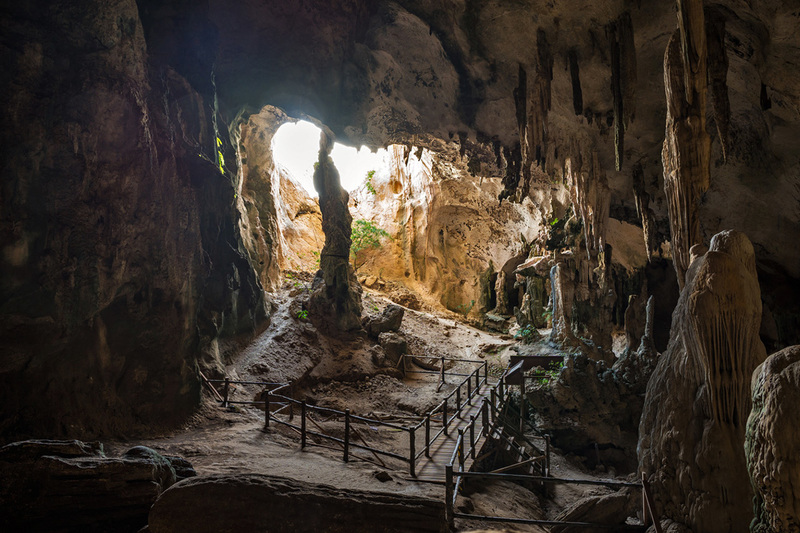
Interior Khao Khanab Nam Cave
Viking Cave, Phi Phi Island
One of the most intriguing sites to visit on Phi Phi Island is the Viking Cave, so called because of a painting of a Scandinavian longship known as a Drakkar, ‘Dragon’, boat on the walls of the interior of the cave. These paintings are believed to be of fairly recent origin, certainly not prehistoric as are many of the cave paintings in the caves of the region, but more likely to be the work of stranded sailors seeking refuge from a tropical tempest. Here too the birds’ nests of the Edible-nest Swiftlet, also called the White-nest Swiftlet, are collected for sale in the lucrative Chinese market where they fetch high prices.
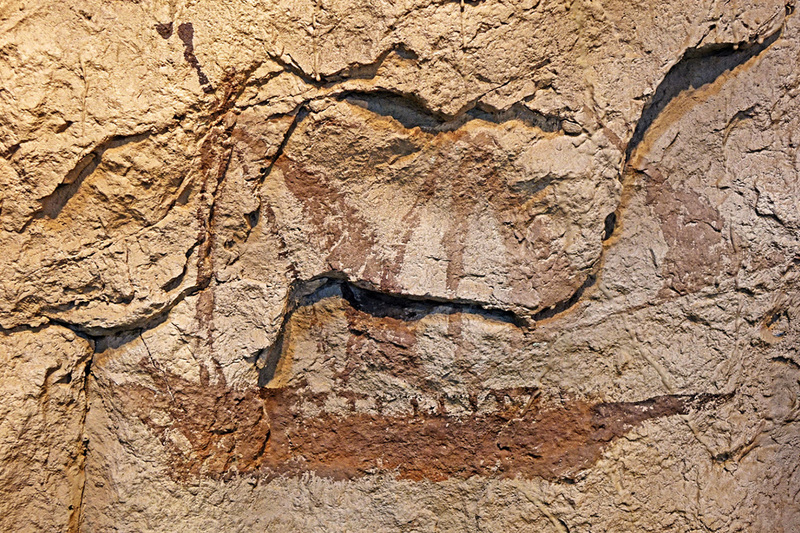
Wall paintings, Viking Cave
Diamond Cave, Railay Beach
While enjoying the sea and sun on RailayBeach it is well worth taking a break to visit Diamond Beach, otherwise known as Phra Nang Nai Cave, just a short walk inland. Large numbers of insectivorous bats make their home here in the cavernous interior where you can see some amazing stalagmites and stalactites set against the background of golden-coloured rock formations.

The golden interior of Diamond Cave, Railay Beach
Tham Phra Nang Nok Cave, home of the Sea Princess
On the eastern side of Railay Bay is the Tham Phra Nang Nok Cave, Princess Cave, where since ancient times fishermen and sea farers make offerings to a phallic shrine, a lingam, various called a palad khik or siwaleung in Thai. It is believed to be the home of a mythical sea princess to whom fishermen and those who travel by sea appeal for protection and good favour. The cave is home to quite a number of (mostly) wooden carved phalluses in all shapes and sizes and a small shrine.
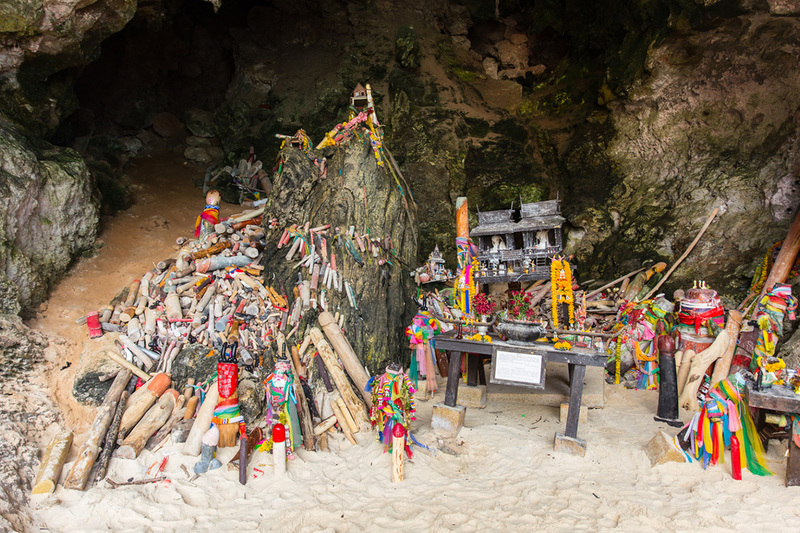
Cave of Princess Si Kunlathewi, Tham Phra Nang Nok
A labyrinth of caves
Most visitors come to Krabi for the obvious attractions of stunning scenery and superb beaches but the area is honeycombed with cave systems that are as fascinating and intriguing today as they were to our distant ancestors for whom these ‘other worlds’ were often sacred places where spirits were venerated or where the dead were buried. Like ancient entrance ways to subterranean realms of mystery they tap into an almost visceral curiosity that has an ineluctable power to draw each visitor into their depths. The caves of Krabi are especially rewarding for the curious and well worth a visit.
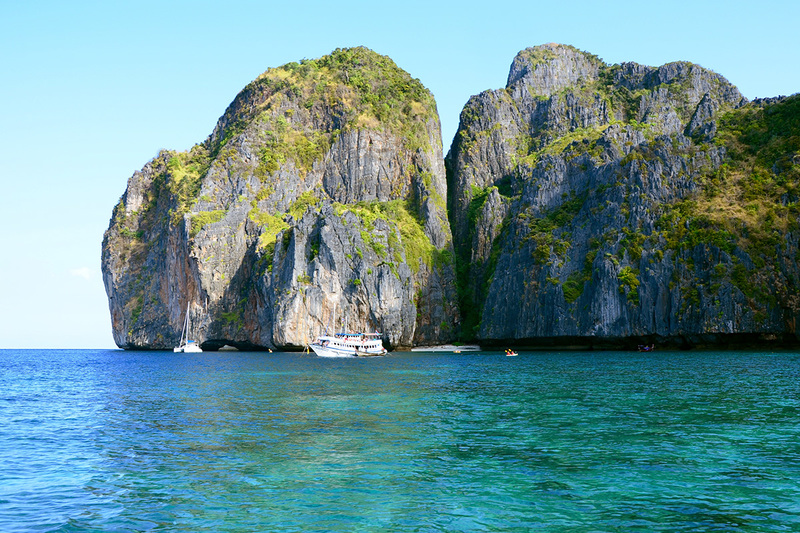
The rugged limestone cliffs and turquoise seas of Krabi










of collaborative energy




Before proceeding to use the website please carefully ready our Terms and Policies
I accept Diwerent's Terms and Conditions and Privacy Policy










